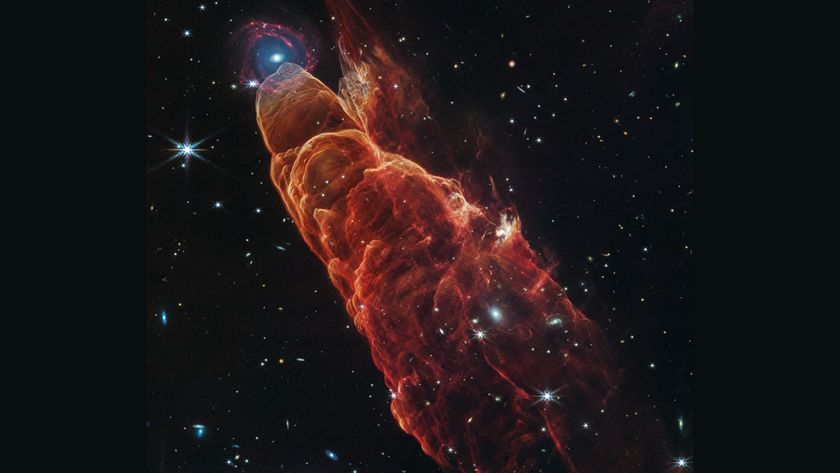What's Causing the Fierce Santa Ana Winds?

This story was updated on 12/2 at 5 p.m.
The Santa Ana winds sweeping across Southern California this week are faster and stronger than they have been in at least a decade. The gusts of hot, dry air that batter the Los Angeles area each fall and winter exceeded 80 mph (129 kilometers per hour) Wednesday and Thursday (Nov. 31-Dec. 1). The winds overturned tractor-trailers, downed trees and knocked out the power to Los Angeles International Airport and an estimated 200,000 homes.
As the Santa Anas blow in sporadic bursts from October through March, they present a triple threat of wind, heat and dryness, which often turns the region's hardscrabble flora into explosive fuel for wildfires. While drying out vegetation, the winds fan any flames that ignite, leading to widespread forest fires that in some years span hundreds of thousands of acres.
The infamous winds are especially extreme right now, experts say, because of the huge pressure difference between the area where the moving air originated and where it has ended up.
The Santa Anas develop in the Great Basin, a desert covering most of Nevada and part of Utah. The atmospheric pressure above the Great Basin tends to be high during the colder part of the year. In the Northern Hemisphere, air circulates clockwise around high-pressure areas — the same effect that causes Atlantic hurricanes to curve clockwise — and so the Santa Anas curl around the Great Basin and head west.
Picking up speed as they whoosh through mountain passes and canyons, including the Santa Ana Canyon, they end up in the Los Angeles Basin, the low-lying area near the California coast that contains Los Angeles and surrounding counties.
The Los Angeles Basin sits at a much lower elevation than the Great Basin, and the drop in elevation as the winds sweep from one place to the other imbues them with their characteristic hotness and dryness: Air compresses as it descends, which causes it to rapidly heat up. As its temperature rises, so does its capacity to hold water vapor. Starting as cold, exceptionally dry wind in the Great Basin, the Santa Ana winds grow hot and thirsty as they blow downhill to the Los Angeles area, sucking the moisture out of any plant life they encounter (though that moisture is still not nearly enough to saturate the air). This leaves those areas particularly susceptible to wildfire.
Sign up for the Live Science daily newsletter now
Get the world’s most fascinating discoveries delivered straight to your inbox.
According to Carlos Mechoso, professor of atmospheric and oceanic sciences at the University of California, Los Angeles, there is currently a very high pressure system hovering above the Great Basin.
"That pressure drives the air through the passages in the mountain to the west, and because the pressure difference between the east and the Los Angeles Basin is very big right now, the wind is being pushed very hard," Mechoso told Life's Little Mysteries, a sister site to LiveScience.
With some of Southern California experiencing abnormal dryness this fall, the wildfire hazard was already big enough before the current Santa Ana episode. For the next few days, firefighters will be on high alert.
The text was updated to reflect the latest conditions, and clarify the source of the winds.
This story was provided by Life's Little Mysteries, a sister site to LiveScience. Follow us on Twitter @llmysteries, then join us on Facebook. Follow Natalie Wolchover on Twitter @nattyover.
Natalie Wolchover was a staff writer for Live Science from 2010 to 2012 and is currently a senior physics writer and editor for Quanta Magazine. She holds a bachelor's degree in physics from Tufts University and has studied physics at the University of California, Berkeley. Along with the staff of Quanta, Wolchover won the 2022 Pulitzer Prize for explanatory writing for her work on the building of the James Webb Space Telescope. Her work has also appeared in the The Best American Science and Nature Writing and The Best Writing on Mathematics, Nature, The New Yorker and Popular Science. She was the 2016 winner of the Evert Clark/Seth Payne Award, an annual prize for young science journalists, as well as the winner of the 2017 Science Communication Award for the American Institute of Physics.












